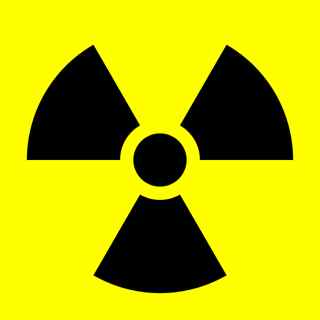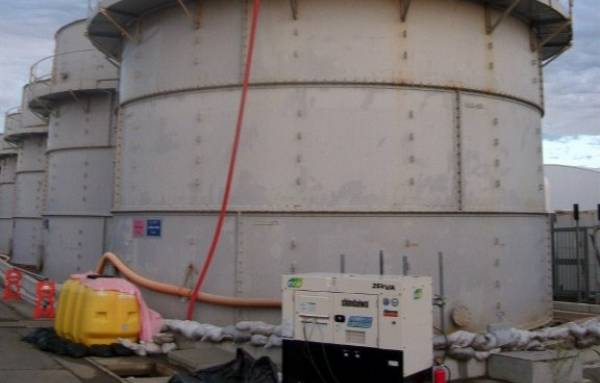In a stunning reversal of disclosure, Japan asks for immediate international assistance to stop radiation leaks into the Pacific.

"We are wide open to receive the most advanced knowledge from overseas to contain the problem," Abe said in his English speech to open the conference on energy and environment. "My country needs your knowledge and expertise," [Prime Minister Shinzo Abe] said. (Tokyo, October 6, 2013 by Mari Yamaguchi, Associated Press)

Fukushima Dai-ichi Nuclear Plant: Contaminated Water Tanks (Numbering About 1,000)
Unabated leaks continue at Japan's nuclear power plant following the initial 2011 cataclysmic earthquake and tidal wave event that caused the Fukushima site to experience meltdown.
Can radioactive rods have reached soil and be in contact with ground water?
Murray E. Jennex, Ph.D., P.E. (Professional Engineer), Professor of MIS, San Diego State University:
The active fuel rods at the time of the accident would have to have melted and then caused the reactor vessel to breach followed by the containment structure to breach. Not a reasonable or even plausible likelihood. I expect parts of the active fuel rods melted, but this has been contained in the reactor vessel and containment as I've seen no evidence to support breaches of those two barriers. On the other hand, the rods in the spent fuel pool may have melted, they are much less active but the most recent still may have had decay heat sufficient to melt them. I consider it more likely that these rods were breached during the explosions associated with the event and their contents may be in contact with the ground water, probably due to all the seawater that was sprayed on the plant.
The reality of the situation is not as gentle as potential contamination of salmon, which may or may not be of a harmful magnitude--completely as yet unknown--but instead, the world is faced with the challenge to step up and stop. Stop the continuous feed of radioactive water into the open Pacifc Ocean.
The latest acknowledged spill, detected Thursday, October 3, 2013 is attributed to rainfall:
Murray E. Jennex:
On Fukushima, there is so much contamination possible from outside the reactor (spent fuel buildings and turbine decks) that you don't need to believe in a very unlikely reactor vessel/containment structure failure to have large scale contamination that needs to be addressed. I believe the real issue is the huge mass of contaminated water resulting from cooling the damaged reactors.
Japan has organized major utilities and nuclear experts to discuss decommissioning and to confront the contaminated water problem. Not yet reached is transparency on how much radiation is spilling or by what means. The most likely scenario being that nobody knows.
Tokyo Electric Power (TEPCO) has not demonstrated that it understands its responsibility as owner/operator of the Fukushima plant now hideously crippled following nuclear meltdown. Flagrant is the ongoing disregard for human and marine welfare and ocean water integrity as water leaks continue.
Tepco has lost $27 billion since the 2011 disaster at its Fukushima Dai-ichi nuclear plant. Land decontamination needs to happen for a zone said to be the size of the state of Connecticut and radioactive water flows from the plant into the ocean.
Focus is not on immediate resolution of the containment/clean-up crisis now leering out at the world like a weeping monster straight out of a Boris Karloff and H.P. Lovecraft horror movie. What is going on?